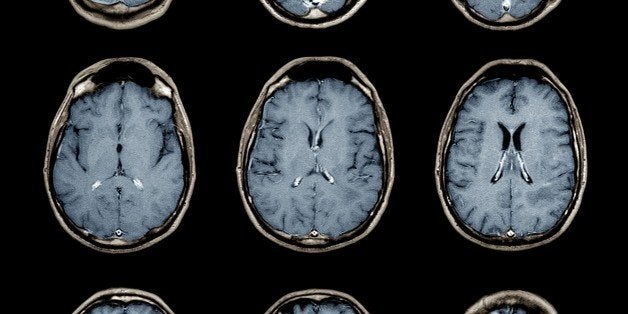

Drug addiction poses a large threat to the economic and health status of countries around the world. In 2007, the cost of drug abuse in the United States was estimated to be around $193 billion, and this figure is projected to have increased significantly due to inflation and population growth. Despite the human and monetary costs, the mechanisms that drive drug abuse and subsequent addiction remain poorly understood. Human behavior stems from the brain, and the brain has been implicated as a major player in the beginning stages of drug abuse, the shift to addiction, and relapse following drug abstinence.
Addiction is a process that has three stages: first exposure, context association, and tolerance or withdrawal. First exposure is defined as the first time a person is administered a drug. Typically drugs of abuse, such as morphine, have potent effects during first exposure and a person may feel euphoric or in some cases experience uncomfortable side effects. Regardless of the effect, the first exposure to any drug will elicit the strongest response from a person. Context association is the second stage of drug addiction and occurs when people repetitively administer a drug in order to have a desired effect (pain relief (termed 'analgesia'), euphoric high, etc.). The brain consists of millions of neurons that communicate with each other to send messages to the rest of the body. This highly organized population of neurons is able to change the pathways of communication between sets of neurons. These changes allow the brain to adapt and respond to environmental and contextual cues. This process of flexible change, termed 'neural plasticity,' is the basis of learning and cognition, which are closely related to the process of addiction acquisition. As a person repetitively administers a drug, the brain learns to associate the stimulated pathways that induce the feeling of analgesia (or other desired effect) with the context in which the drug was administered. These neural pathways and context cues are tightly associated and can produce powerful effects. For instance, when a drug addict is in the same room or location that he routinely administers the drug, the physical location itself can induce intense cravings and drug-seeking behaviors. Tolerance and withdrawal are effects that occur after neural and contextual associations have been made with drug administration. Tolerance is characterized by the need for increased drug administration in order to achieve the same "high." Withdrawal is the physical and mental response to stopping drug use; the symptoms include nausea, vomiting, and extreme drug-seeking behaviors in response to drug cessation.
Alterations in neuron pathways and brain communication are thought to affect all three stages of addiction. Until recently, the majority of addiction research in neuroscience has been focused on the role that neurons play in initiating addiction; however, recent studies have shown that other non-neuronal cells in the brain, glia, may play a role in addiction processes. Microglia, one type of glia that is considered the immune cell of the brain, has traditionally been studied solely for its immunological functions. Here, we suggest a new way that microglia may be involved in the development and maintenance of addiction to opioids and other drugs of abuse.
Microglia are a specialized subset of macrophages in the brain that actively scan tissue for damage. Microglia activity is increased in injury and damage, but even in the healthy brain, microglia are constantly working to engulf debris, identify foreign material, and alert other immune cells of a disturbance in the environment. In response to an immune challenge, microglia are "activated" by nearby immune cells, such as T-cells, or by bacteria and fungi, among other triggers. This activation causes the microglia to increase in size and increase their secretion of immune signaling molecules, known as cytokines and chemokines. Altered signaling results in plastic changes to the brain, especially in neuronal pathways. Glia are communicating with neurons as well and are in a unique position to transform neuron signaling.
Recent studies have investigated the potential influence of microglia on addiction processes and the pathways that lead to microglial activation. It has been shown that microglial activation plays a role in reduced analgesia, increased tolerance, and increased withdrawal symptoms. Using drugs to inhibit glia blocks these effects and increases the clinical efficiency of tested opioids. Though it is clear that microglia play a role in addiction, it is still unclear how microglia are actually activated by drugs of abuse. One hypothesis is that microglia are activated through a class of receptors called toll-like receptors (TLRs), specifically TLR4. Studying this gene in mice, it has been shown that if the TLR4 gene is disrupted, there is a reduction in withdrawal symptoms and increased analgesia with morphine treatment; however, the mechanism of glial activation is still under investigation.
One important characteristic about addiction processes that makes addiction research both interesting and challenging is the fact that genetics, differences in individuals' environments, and early life experiences can change the risk of developing addiction. The Bilbo lab at Duke University studies this unique interface between early life experience and addiction and focuses on the role of microglia in this interaction. I chose to work in this lab on this topic because the idea that experiences and exposures during early life can influence or predict vulnerability for addiction is important and it can be applied to addiction prevention and improved medical care.
The primary animal models used in neuroscience are the rat and the mouse because these two species' physiological processes resemble that of a human. Early life experiences in rats are often manipulations that change how mother rats care for their offspring. Maternal care behavior, measured by licking and grooming of her pups, can be increased and improved by separating a mother rat from her litter for 15 minutes once a day during their development. This simple manipulation has important and surprisingly drastic results, changing the pups' responses to stress, immune challenges, drugs, and importantly drug relapse. Recently, Dr. Jaclyn Schwarz of the Bilbo lab at Duke University, used handling experiments in rats and showed that maternal care reduces glial activation in response to morphine, increases basal levels of an anti-inflammatory signaling molecule, interleukin (IL)-10, within microglia in a specific region called the nucleus accumbens, and prevents morphine relapse in adulthood. Interestingly, the results of these handling experiments can be mimicked through use of a pharmacological glial modulator, ibudilast. This novel finding has many important clinical implications and opens opportunities for possible drug therapies and identification of vulnerable population groups based on early life experiences. This finding in rats does not directly imply that maternal care in humans affects individuals' response to drugs and liability for addiction acquisition; however, it has been shown that high stress or physical abuse during childhood are good predictors of alcohol and drug abuse in adulthood.
The purpose of this thesis was to expand on the idea of interface between early life experiences and addiction by translating the previous results shown in rats to a mouse model. Utilizing a mouse model has several advantages including cost effectiveness and ample opportunity for genetic manipulations. Transgenic, or genetically manipulated, mice are mice that have been engineered through selective breeding to contain or delete a certain gene of interest. These transgenic mouse strains are important for understanding the role that specific genes play in molecular interactions and behaviors. Through my experiments, I examined gene expression in mice in response to morphine administration and compared it to that of rats after similar morphine administration. I sought to examine the following questions: 1) in mice, is there an effect of time, dose, or brain region on glial activation in response to morphine administration, and 2) given the evidence suggesting a possible TLR4 mechanism of glial activation, would a TLR4 knockout mouse strain be useful in furthering this research. If so, can we test the viability of this mouse model by assessing if learning is affected when one or both copies of the TLR4 gene are deleted? The latter question stems from the fact that learning and addiction processes are closely related. If an animal model does not have the ability to make the necessary context associations and neural connections associated with addiction, it can not be used to accurately assess addiction processes.
The results of my experiments showed that the microglial response to morphine mimics that of rats in response to similar doses, including an increased expression of several immune signaling molecules. However, the period of maximal expression occurs much later in mice (60 minutes) than in rats (15 minutes). These results were especially important with respect to genes such as IL-10, which were extensively studied in the previous rat model, indicating that the mouse response to morphine is slower and more prolonged than in rats. My results also showed that learning may be impaired in mice with deletions of the TLR4 gene; therefore, this particular strain may not be a suitable model for further addiction analysis. Overall, the similar gene expression profiles found in the mouse and rat support the notion that we should continue to expand our addiction research through the use of transgenic mice as they are viable modeling tools with great potential.
Future work in this area of research will be absolutely essential to the progress of addiction therapy and clinical advances in addiction prevention. It has been extremely rewarding to see, experience, and create connections between basic science and the future of clinical medicine, and I have the utmost respect for the mentors that helped me complete this project. As a physician in training, it is clear how closely intertwined the basic sciences and clinical medicine have become, and how important it will be to continue to educate students to innovate and integrate.
--Emily Ngan
The HuffPost College Thesis Project gives students a chance to share with a wide audience the fruit of their hard academic work. The project is launching with about a dozen partner schools, which comprise students from public and private, two- and four-year colleges. To read all posts in the series, visit here.